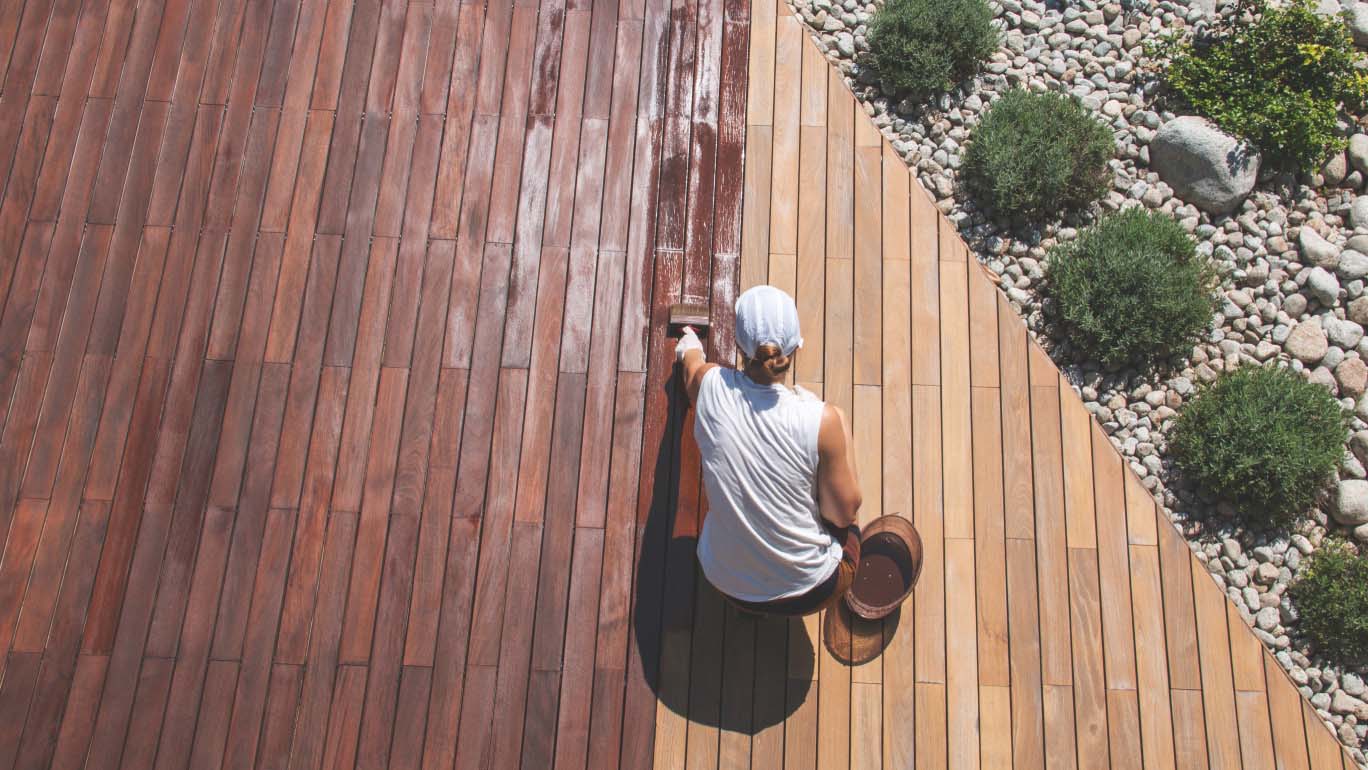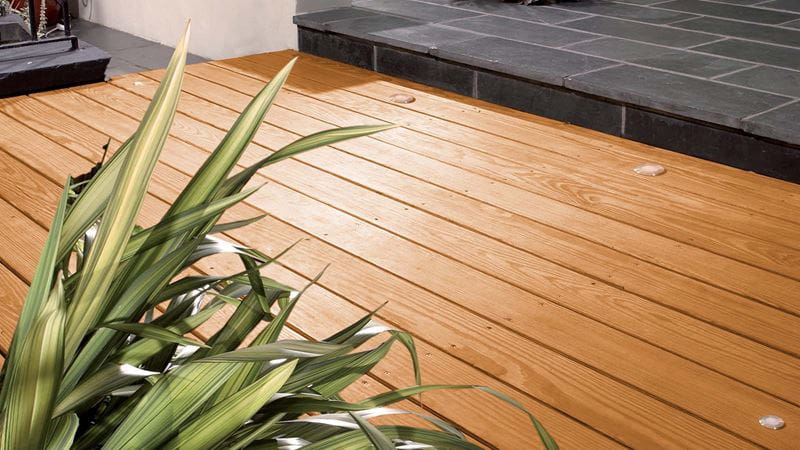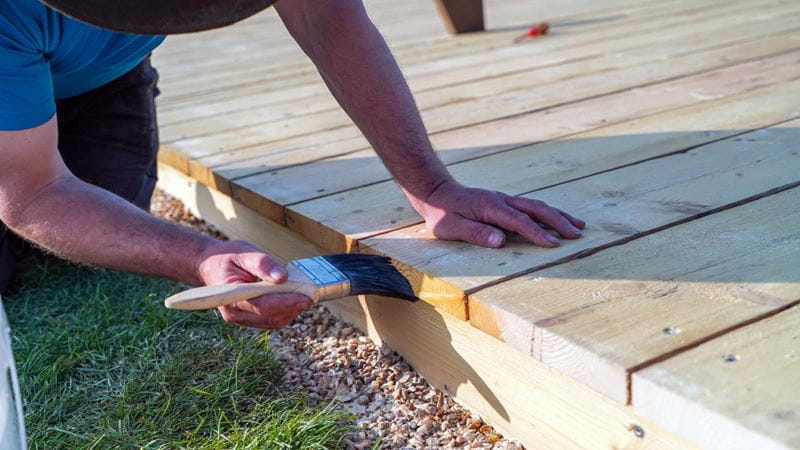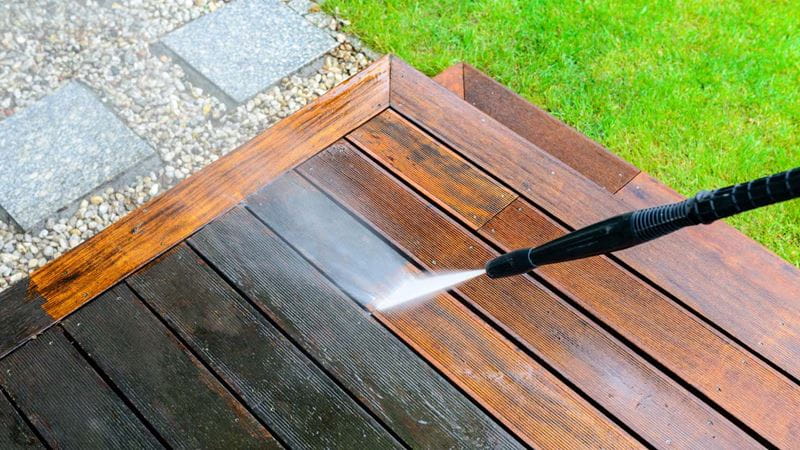

We explain the difference between decking oil vs stain, what they should be used for and how you can get the best results from using each product.
Garden decking can go through a lot, as it works hard to keep our outside spaces level. It’s walked, played and dined on; it withstands the British weather; and it gets scratched by our pets’ claws, scraped by garden seating, and more. That’s why it’s important to keep your garden decking design looking its best.
But do you know if you should be using decking oil or stain? If your decking is made from a composite material (often a mixture of wood and plastic) then it won’t need treating with either decking oil or stain. Though, to be certain, always check with the manufacturer and installer about ongoing care of any decking.
But if your decking is a wooden structure, then you’ll want to know whether to use decking oil vs stain – because the products can react with wood in very different ways.
Both are used to treat the wood

Knowing how to treat decking properly can help increase the life of its surface, as well as make it less slippery and prone to fading. Though oils and stains are both used to protect your decking’s timber, they help in different ways.
“Oils penetrate deeply, to preserve the wood by replenishing its natural protective oils,” says Ken Jensen, senior technical consultant for woodcare brand Sadolin. “Stains, on the other hand, create a film-like defensive layer on the surface.”
Decking expert and consultant Karl Harrison agrees, noting that decking oil is applied to the surface of a smooth decking board to replace the natural oils present in the wood, which are weathered away over time. As for decking stain, he explains: “A decking stain is usually solvent, or water-based, and is used to change the colour of the timber.”
This doesn’t mean that oils don’t have any effect on the colour of your decking, though. “Oils are designed to protect and enhance the wood’s natural colour,” notes Jensen. “So, deciding which one is best for your project depends on whether you want to maintain or alter the material’s natural look.”
The grain of wood is important

Depending on the material your decking is constructed from, you may need to wait a while before picking up a brush and going to town with the oil or stain.
It's important to know if the wood has any existing treatment on it. If it does, experts at B&Q recommend leaving your decking to weather naturally for six months or so before you apply stain or oil. This, the company says, helps to ensure existing treatment has eroded enough for the new product to sink in and stick.
Untreated wood, and decking that’s been previously stained, can be stained straight away.
Things are a little different if you plan to oil untreated wood, though. “If you have a tight-grained timber, such as hardwood, then you are best to leave for at least six months to a year before applying any oil-based product,” advises Harrison. “This is because the timber needs time for the surface to open fully, which then allows the product to properly soak in. “If you have a pine deck, then cut it back with 240 grit sandpaper or apply NetTrol to open the grain. Allow this to dry fully before saturating with oil.”
The experts at Toolstation told Saga that stains will not take to a deck that’s been previously oiled, meaning it’s best to choose between one or the other.
The process is similar, but oil takes longer to penetrate and dry

The application processes for stains and oils are largely similar, according to Jensen. Before you get started, though, the wood must be properly prepared.
“Whichever product you choose, prepare the timber surface by either sanding or using a chemical to neutralise the surface before applying an oil or stain,” says Harrison.
“You should mix the products thoroughly prior to application, to make sure the pigment and ingredients are effectively distributed, and a brush is best to achieve a smooth finish,” Jensen continues. “Both also need to be applied in dry conditions and at temperatures above 10°C (50°F), so they can dry properly. With oils, sometimes excess material might need to be wiped away from the timber surface with a lint free cloth.”
Harrison advises that with oils, you must allow the product to fully soak into the wood until it is saturated. “You may find that given the right climatic conditions that water-based products will dry faster than oil-based,” he adds.
You need to wait until both stains and oils are fully dried before seeing the finished results. “Before you coat the whole deck, cover a small area or timber offcut as a test, to ensure you’re happy with the finish,” suggests Jensen.
Regular maintenance is key

It really does depend on how you use your deck and what it’s made from as to whether decking oil or stain is the best choice. But as we’ve mentioned, once you have committed to oil, your deck won’t be suitable for staining in the future. You need to get it right first time. Use these key advantages to help you decide.
There are a couple of tricks that will help your decking start life at its most robust and stay in good condition for longer. This includes making sure that all wood has been full stained or oiled before it’s constructed into the deck to make sure every inch has been treated. Then when assembling the deck, do so in a way that helps water to run off easily. “
When the decking is constructed, it incorporates a slight gradient to assist in the shedding of rainwater,” advises Jensen. “All elevations of the timber used, particularly the end grains, should be fully coated prior to fixing.”